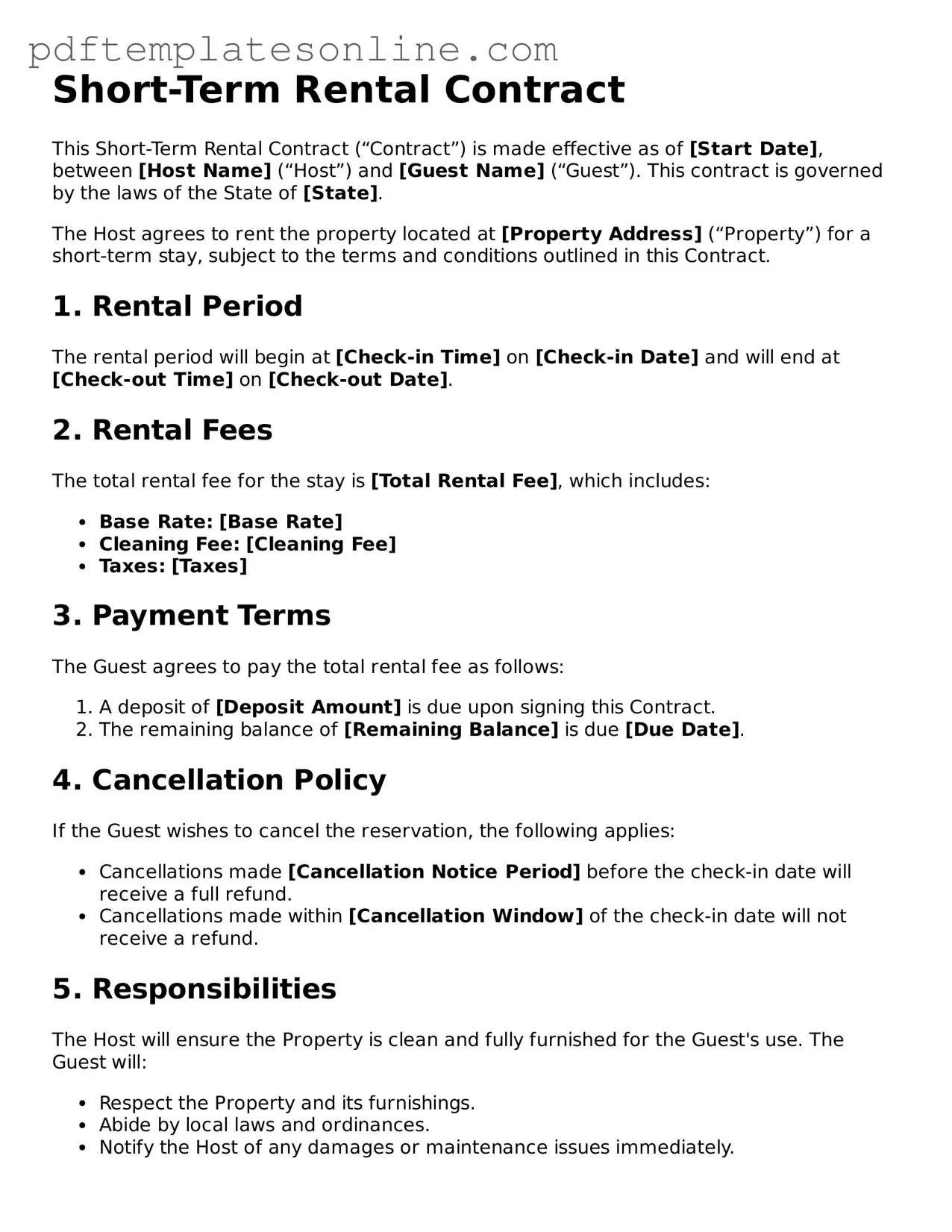Filling out a Short-Term Rental Contract form can be a straightforward process, but many people encounter pitfalls that can lead to misunderstandings or disputes. One common mistake is failing to provide accurate contact information. It’s essential to ensure that both parties can reach each other easily. Missing or incorrect phone numbers and email addresses can create unnecessary complications.
Another frequent error involves overlooking the rental dates. Clearly stating the check-in and check-out dates is crucial. If these dates are incorrect, it can lead to confusion about the availability of the property. Double-checking these details before submitting the form can save both parties a lot of hassle.
Many individuals also neglect to read the terms and conditions thoroughly. Each rental agreement has specific rules regarding cancellations, deposits, and responsibilities. Ignoring these details can result in unexpected fees or loss of the security deposit. Taking the time to understand the terms ensures that everyone is on the same page.
In addition, some renters forget to specify the number of guests. This information is vital for compliance with local regulations and property owner policies. Overstating the number of guests can lead to additional charges or even cancellation of the rental agreement.
Another mistake is failing to clarify payment methods. The contract should clearly outline how and when payments will be made. Whether it’s through credit card, bank transfer, or cash, specifying this detail helps avoid disputes later on.
People often forget to include any special requests or needs in the contract. If you have specific requirements, such as accessibility features or pet accommodations, it’s important to mention these upfront. This ensures that the property meets your needs and avoids any last-minute surprises.
Some individuals may also skip signing the contract altogether. A signature is a crucial part of the agreement, as it indicates that both parties accept the terms laid out in the document. Without a signature, the contract may not be legally binding.
Additionally, failing to keep a copy of the signed contract is a common oversight. Having a copy for your records can be invaluable if any disputes arise. It serves as proof of the agreed-upon terms and can help clarify misunderstandings.
Another mistake is not confirming the security deposit details. Understanding how much the deposit is, when it is due, and the conditions for its return is essential. Miscommunication regarding these details can lead to frustration and financial loss.
Finally, some renters may not verify the property’s condition before signing the contract. Documenting any existing damages or issues can protect you from being held responsible for them later. Taking photos or noting these details in the contract can provide peace of mind.
